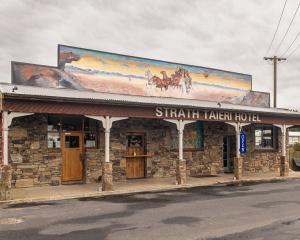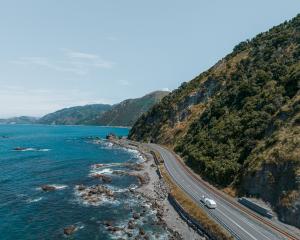Statistically, of course, only 50% will be in the top half, so a dose of male over-confidence is evident.
For my part, despite 38 years of driving with no more than the most minor of scrapes or bumps, I've come to realise I lack the spatial awareness and subtle skills to be among the best behind the wheel.
Not surprisingly, therefore, the thought of driving in foreign parts scared me.
That left buses and trains - their drivers can take the responsibility - and the increased chances of interesting and serendipitous encounters as option nombre un.
The best idea seemed to be to eschew the metal and glass bubble and travel with the locals.
But, and it is a big but, our favoured France of beautiful villages and rural landscapes demanded flexibility. Public transport, so extensive in and between the cities, just doesn't do it in the countryside, various internet forums advised.
I must admit that after week one, while welcoming the opportunity to go where and when we like, my nerves were strung tighter than a Spanish guitar. Another 16 days of driving and navigating stretched ahead like a never-ending Australian outback track.
While an early vroom east from Lyon on a multi-lane toll road was OK, we quickly plunged into narrow mountain routes and then the congested twists and turns of the Riviera.
French drivers seemed to hurtle towards us aware, I know not how, that a head-on would be avoided.
My wife Shona, meanwhile, was the petrified passenger, often having to spur me to go further left and nearer the middle of the road to keep clear of the kerb, the press of buildings or the bank or ditch.
Somehow, we and our wing mirrors survived - even through the narrow medieval town streets built centuries before Henry Ford was a gleam in anyone's eye.
I, too, repetitiously lamented the size of our car. The compact Citroen C3 originally requested had been "upgraded" to a mid-size C4, with my agreement, because of a temporary dearth of C3s at our pick-up place.
In Dunedin, the C4 seems small. In Provence most drove even smaller cars, and it was easy to see why. But I felt as if I was driving a tank in those early days.
How could I possibly get the 43km-on-the-clock Citroen around France to Paris with it and us intact?Thankfully, our travels took us to wider secondary roads that actually had shoulders.
Steadily, changing gear with the right hand and switching sides for indicators and wipers became the norm.
Think for a few moments about a mantra I had read in a section on driving on a Peugeot lease website and imagine putting it into practice. Mentally reciting "tight right, loose left" seemed to help.
The stream of roundabouts were becoming straightforward, we were becoming familiar with the car GPS and reading our big book of Michelin maps was easier.
We relied on both forms of navigation, but found - at least initially - the GPS took time and effort to get used to.
"They're basic to use," friends had said. But for someone to whom a gadget is at best a means to an end "easy" is, I'm afraid, relative.
Mostly, we travelled here and there without too many false turns. Mostly, the GPS didn't lead us astray, although be careful of the "scenic" setting unless you like narrow and obscure byways.
Loving mountains and up for alternative routes, I chose to ignore a sign that seemed to indicate a high-pass route was closed.
Sure enough, after we wound our way upwards - the lack of other cars gave it way - we found the shady Italian side blocked by deep snow, even in late May. Never mind. I was pleased to detour high into the Alps.
Ambitiously and foolishly, I thought we might be luckier on a lower mountain col from Italy to France. We wended our way up a populated valley before, after about 40 minutes, I made a wrong turn and we were on a toll motorway going the wrong way through tunnels and with no exits. Soon we had returned to the town where we had had lunch.
Back up the valley we trundled, and this time, as we turned off correctly, Shona spotted a suspect sign. Sure enough, the road seemed to be closed. So back we went through the tunnels and then onwards in a sweep past Turin and over a lower pass.
Incidentally, I drove through more tunnels and around more roundabouts in Europe than I've encountered in the rest of my life put together. For that matter, I also saw sufficient statues around France to last two or three New Zealand lifetimes.
Another day confronting challenges comes with a warning: beware the French and their holidays.
Unbeknown to us, Ascension Day holiday arose on a Thursday, Friday became a holiday and a four-day weekend was had by many.
Accommodation, usually easy to find, was suddenly "fermer" (closed) or "complet" (full).
As for the roads, try driving in and around Paris on a holiday Sunday afternoon. We were stuck in a toll-gate jam for nearly 40 minutes.
By that stage, providentially, I was far more confident and could combine courtesy with competitiveness as rows of vehicles fought for space as they merged.
By that stage, too, lines of cars would not bank up behind me (I had earlier become an expert at finding pull-over places to let others pass), and I was also up for overtaking at times.
I was also more comfortable at 130kmh on the autoroutes, as well as 30kmh through one-car-wide streets.
We did find, however, that diesel had run out on that holiday Sunday at a large Shell petrol station at one of the extensive lay-bys you find along the autoroutes.
Frustratingly, there were no signs to tell us those pumps were dry. They just didn't work, so we decided to turn off the main road towards a town in the hope, fulfilled thankfully, that the shortage was not widespread.
It was thanks to a late decision to go to Passchendaele, which is actually over the border in Belgium, that we found ourselves in this situation.
Because of the position and role of Paris - main roads lead to Paris - we had driven through the capital, albeit on the motorways, on that busy afternoon.
Two days later, in a bed and breakfast on a Passchendaele farm we were to meet two Australian couples with French driving experience. Both would not go near Paris driving their own cars.
Unfortunately, we were north of the city and our final car drop-off was arranged for Orly Airport in the city's south.
Awaiting us was a last period of pressure and excitement before we enjoyed a more relaxed final week in Paris sans vehicle.
Nevertheless, the car, for all the added responsibility, did prove essential for getting to all sorts of places. It provided the flexibility to pretty much go where we wanted when we wanted and if there is a next time we again will be leasing a vehicle.
And if I, of average or below driving skills, could cope with 3700km of driving in France then most other New Zealanders should be able to as well.
Driving tips and observations
• France is large and the only way to avoid slow trips interrupted by many towns and villages is to take to the multilane autoroute toll roads. Their speed limits are 130kmh or 110kmh (in the wet) or 60kmh (when icy). Slow travel, though, has all sorts of other benefits for travellers.
• On occasions speed limits are unrealistically slow. On undivided roads the open-road speed limit is 90kmh (or 80kmh when raining). A limit of 70kmh is not uncommon and in designated built-up areas the limit is 50kmh. A place-name sign with red border signals entry into such zones. The name sign with an angled bar through it means you can speed up again. Often in the narrow parts of towns and villages the limit drops to 30kmh, plenty fast enough.
• If you keep to most of the speed limits you'll find traffic builds up behind you very quickly.
• The autoroute tolls are expensive, even by European standards, and can cost you as much as fuel by distance covered.
• Heavy taxes make petrol and diesel more expensive than in New Zealand. But the premium was not as large as I expected. Diesel ("gazole") in late May and early last month cost between 1.27 and 1.47 ($NZ2.26 and $NZ2.61) a litre.
• Petrol was about 20 euro cents (35c) a litre more than diesel.
• The petrol stations on the autoroutes were the most expensive. Diesel and petrol at supermarkets and stations in medium-sized towns could be up to 20 euro cents (35c) a litre cheaper.
• A New Zealand driver's licence was sufficient. But I picked up an international licence from the AA ($20 plus passport-sized photograph) because it was needed for the day driving in Italy.
• Most of the tourist sites come with car parks, most of which you pay for. Parking in cities can be costly and spaces hard to find.
• Signposting is generally excellent and follows international protocols.
• French drivers, while speedy on the narrow roads, were polite and helpful on the whole.












